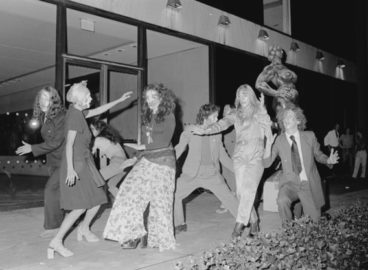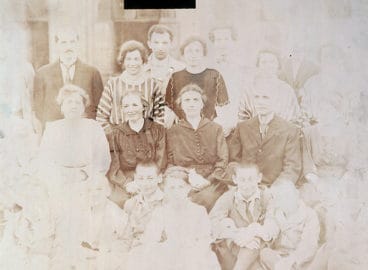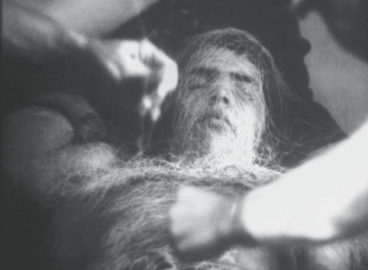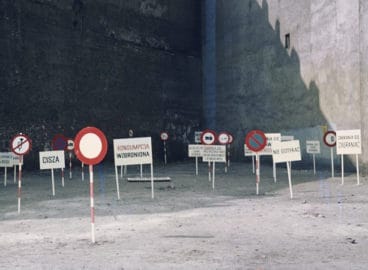This is the third and final installment in the series “Texts by Conceptual Artists from Eastern Europe,” organized by Sven Spieker for post. This series presents newly translated texts by artists from Poland, Hungary, and Slovakia. The focus of this installment is Slovakia.
The first installment, featuring texts from Poland, can be found here. The second installment, featuring texts from Hungary, can be found here.
The four texts we are offering here for the first time in English translation belong in the context of Slovak action art of the 1960s and 1970s, a period when the major protagonists of the older generation of action artists from Slovakia—Alex Mlynárčik, Peter Bartoš, Július Koller, Vladimir Popovič, Jana Shejbalová-Želibská, Milan Adamčiak, and Robert Cyprich—were developing the core ideas of their practices. Glancing over the texts chosen for this project, it is interesting to note that all of them address, in one way or another, some form of designated environment—be it social, urban, or natural—and the formation of a community, however temporary, within such an environment.
Alex Mlynárčik’s “Manifesto Concerning ‘Interpretation’ in Fine Art” (1969) was published one year before the 1st Festival of Snow, which Mlynárčik organized together with Robert Cyprich, Miloš Urbásek, and Milan Adamčiak in 1970 in Slovakia’s High Tatra Mountains. The idea of the festival was to invite participants to use snow as a means to react to the work of international artists from the canon of twentieth-century art. This ephemeral art show resulting in three hundred installations in or with snow—which Mlynárčik explicitly and perhaps ironically likened to a sports event—not only rebuts the focus on stable objects associated with galleries and other spaces conventionally designed to show art, it also rejects, in the spirit of Marcel Duchamp, the fetishization of the artwork as a monadic, self-enclosed form. In this context opening up art to process and dialogue, Mlynárčik understands “interpretation” less as the extraction of meaning from an existing object or text than as an active process of tactile assimilation (in German, Nachvollzug) that can, incidentally, also serve as a model for the assimilation of international trends by artists from Eastern Europe.
Snow also plays a role in Peter Bartoš’s “Physical and Optical Manifesto” (1969), though unlike Mlynárčik, Bartoš is more interested in the phenomenon of change, and the way in which its perception in nature correlates (or not) with the perception of change in art. Bartoš pits the accumulation of goods—in economic terms, the goal of accumulation is an increase in the overall quantity of capital—against what he calls concentration, a term he reserves for describing the successive aggregate states of a natural phenomenon such as snow, its transition from swirling in the air to landing on the ground, melting, etc. While “accumulation” is measured and, as such, an abstract value, “concentration” is experienced and, as such, tactile and embodied. The difference here could not be more dramatic; its historical roots again lie with Duchamp, whose experiments with different forms of embodied measuring were surely not lost on artists in Eastern Europe. The second part of Bartoš’s manifesto mentions several actions from the late 1960s that connect with these concerns, culminating in an announcement for The Behavior of Snow in the Air and on the Ground for 1969–70, a work that closely mirrors the issues and proposals outlined above.
Robert Cyprich’s action Time of the Sun (1969), which he developed in collaboration with the Czech performance artist Eugen Brikcius, involves the drawing of lines forming a sundial by members of two groups in two cities in countries on either side of the Berlin Wall (Ružomberok in the ČSSR and London in England) at the same hour. The punch line of Cyprich’s text is remarkably similar to Bartoš’s: once again the lines drawn by the group members function not as abstract marks of measurement but rather as reflections of their lived experience of dialogue and exchange. Mahatma Gandhi, to whom Cyprich dedicates his project, is key to this idea. For Gandhi is known not only for his unfailing punctuality, but also for his (related) belief that time is a shared property of all people in the world, and that consequently we do not have the right to waste it. Cyprich’s decision to call his action “exercise” is important in this regard: much like Gandhi propagated the need to exercise one’s responsibility for shared time so as not to waste it, so too is Cyprich’s action—adapting Gandhi’s lesson for the divisive reality of the Cold War—rooted both in the (trivial) insight that time is something people on either side of the Iron Curtain have in common, and in the belief that it is necessary to embody (“exercise”) time through lived and shared experience. If that happens, the “synchronicity” enacted by the two groups divided by the Iron Curtain ceases to be an abstract idea and becomes a form of lived community across borders.
The last translation, Ján Budaj’s “Three Sunny Days,” focuses on a three-day Happening that Budaj planned for 1980 in Bratislava’s Medical Garden. The event, which was to be part of a series of related projects combining art and street theater in the Slovak capital, ended up being cancelled by the authorities for unknown reasons. Though Budaj’s summary dates later than the previous texts in our project, it shares with them a clear focus on the environment and the idea of building a diverse community through a galvanizing event. The environment, it must be added, figures in Budaj’s text in a double sense, both as the urban environment of Bratislava and as the participation of ecologists who would enlighten the public about ecological issues not, or only insufficiently, covered by the state media. One particularly important and easily overlooked aspect of Budaj’s description is his mentioning the administrative trickery required to receive the permits necessary to perform in the streets of Bratislava, and the way in which this institutional work ended up shaping the project until it became “an event that could be realized and still remain ‘ours.’” Here the environment that serves as the operational focus of Budaj’s project is, in effect and by necessity, expanded to include not only the public in the street but also the (city) bureaucracy, hinting at the need to conceive the artist’s work as organizer as broadly as possible.
With special thanks to the authors and members of their family who graciously conceded the rights for the first English language publication of the four texts here, including Alex Mlynárčik and Zuzana Bartošová. We also thank Mira Keratová for her generous advisement and assistance throughout, translator Zuzana Flaskova, and the Foundation for Contemporary Slovak Fine Art, Bratislava. Produced by Meghan Forbes, C-MAP Fellow for Central and Eastern European Art, The Museum of Modern Art, New York, with early assistance from the previous fellow, Ksenia Nouril. – post editorial team



